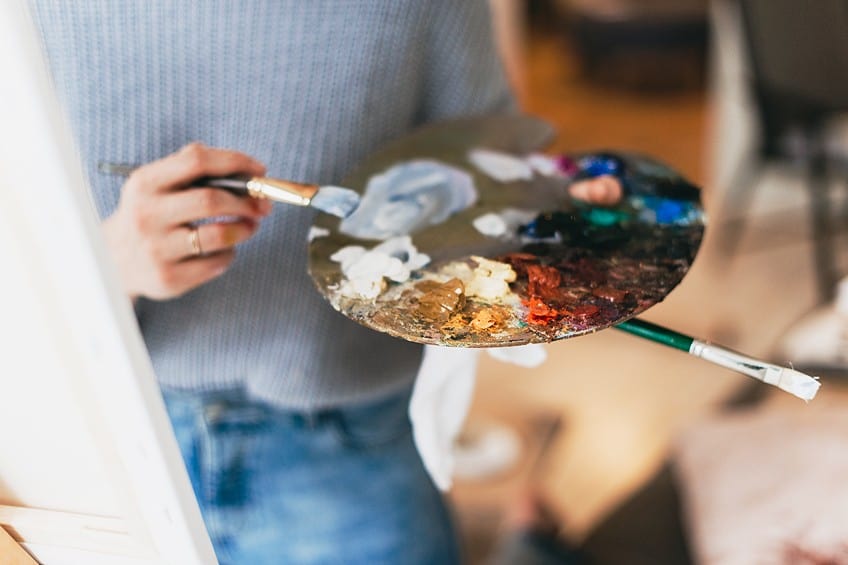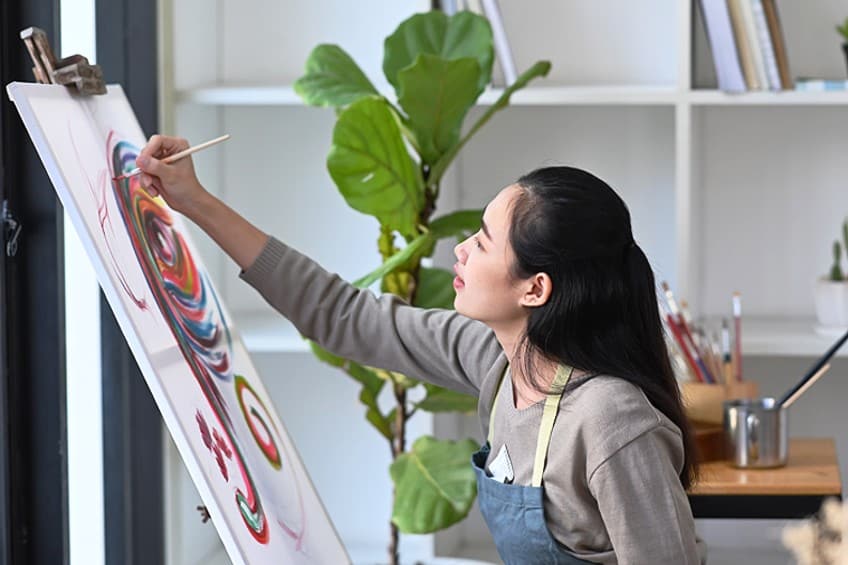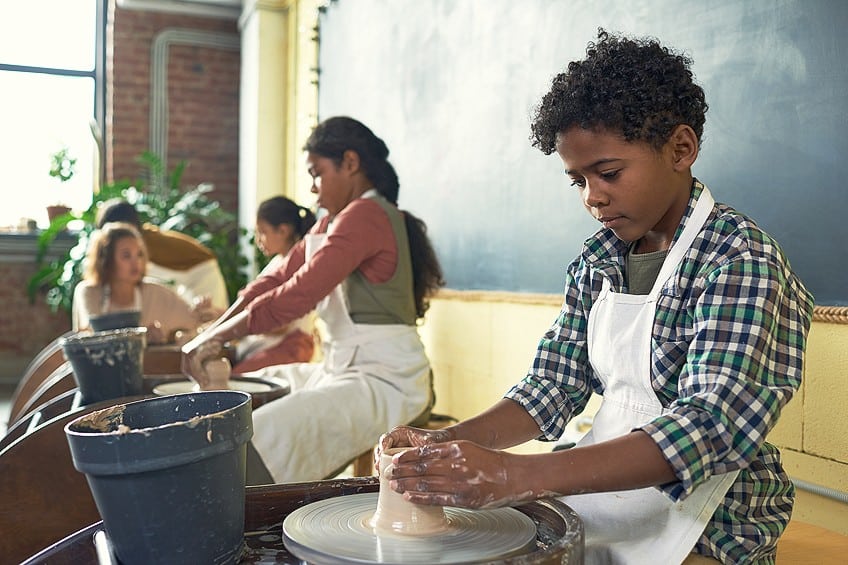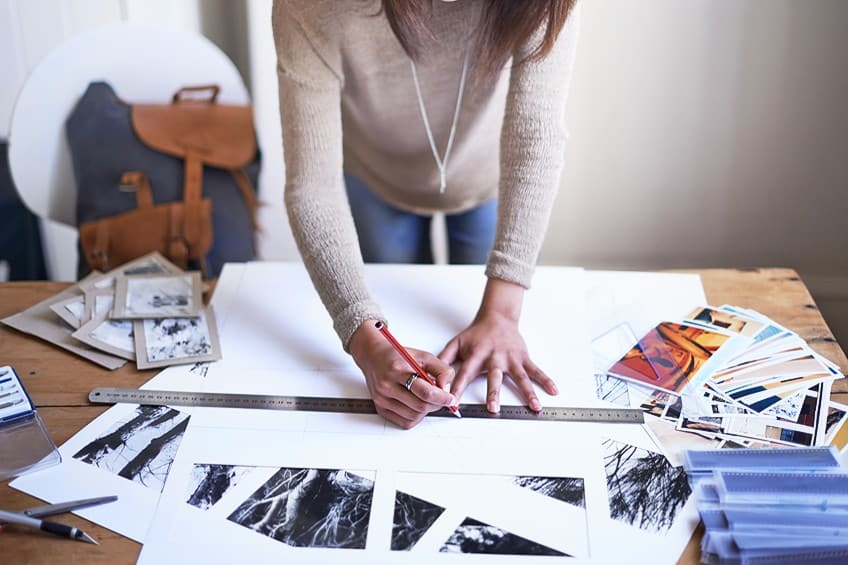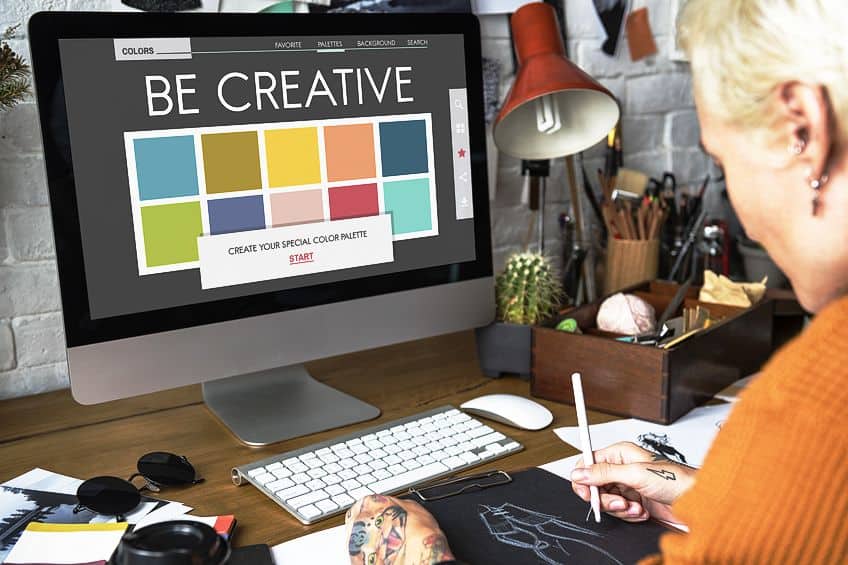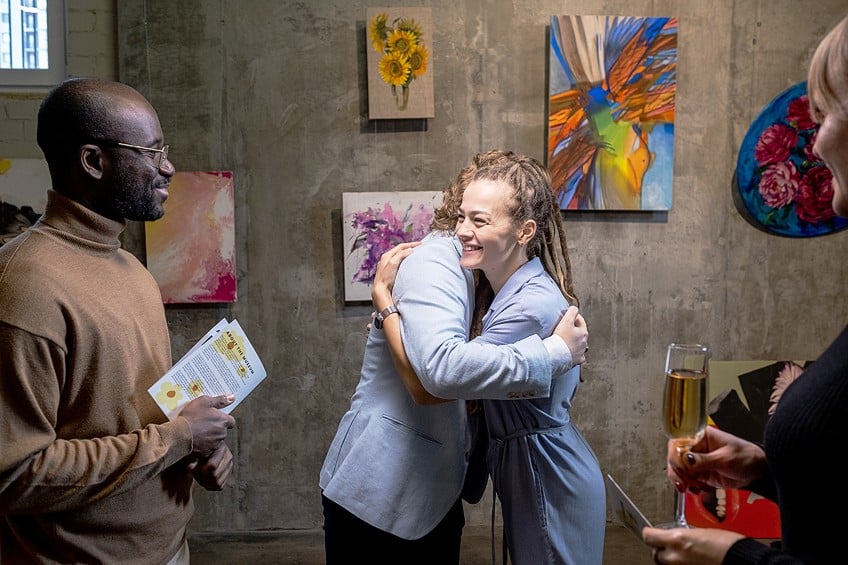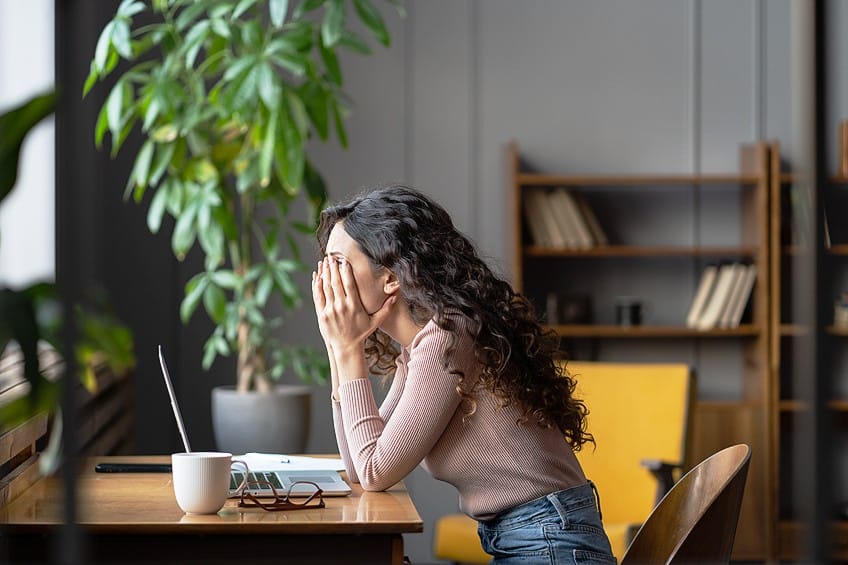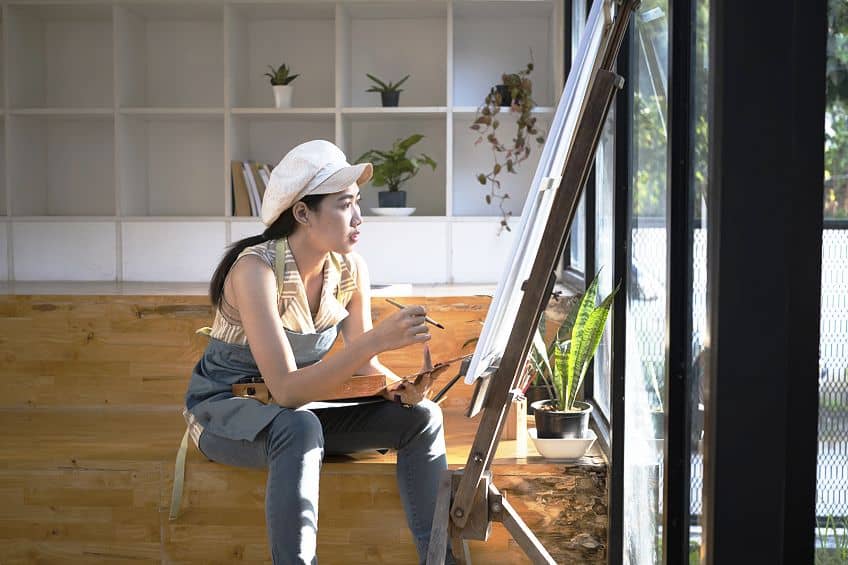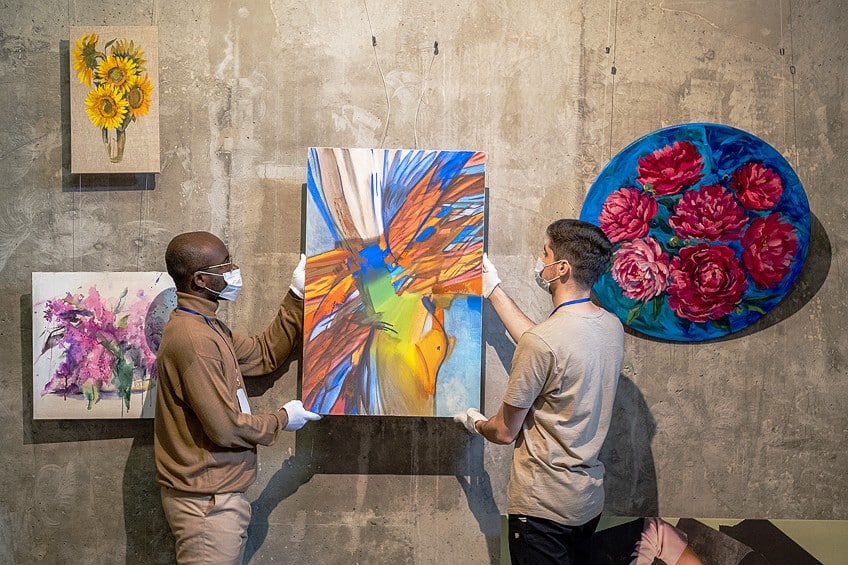How to Become an Artist – Tips on How to Start an Art Career
Are you fascinated by the world of art and dream of embarking on a creative journey? In the realm of imagination and self-expression, many aspire to unlock their artistic potential. If you have ever wondered how to be an artist or contemplated the path toward becoming an artist, this article is tailored for you. From learning how to start an art career to getting into art, and ultimately understanding how to become a professional painter, for example, we will delve into the essential steps and guidance that can pave the way for your artistic evolution.
Contents
- 1 How to Become an Artist
- 2 What It Means to Be an Artist
- 3 Developing the Skills of an Artist
- 4 Building Your Portfolio
- 5 Networking and Building Relationships
- 6 The Business of Art: The Basics of How to Start an Art Career
- 7 Education and Further Training
- 8 Navigating the Art Industry
- 9 Overcoming Challenges as an Artist
- 10 Frequently Asked Questions
How to Become an Artist
The notion of the “talented artist” has long perpetuated a myth that only a select few possess the innate ability to create meaningful art. However, the reality is that any individual can become an artist with dedication, passion, and practice. Artistic talent is not a fixed trait bestowed upon a chosen few; rather, it is a skill that can be developed and nurtured over time. By embracing the belief that creativity knows no boundaries and that artistic expression is a journey open to all, we can overcome the barriers imposed by the “talented artist” myth.
Finally, we can empower individuals to explore their artistic potential.
What It Means to Be an Artist
Art has the power to captivate, inspire, and provoke emotions like no other form of expression. In this section of the article, we will delve into the multifaceted nature of artistry, exploring the different types of art and artists and uncovering the keys to finding your niche in the artistic world.
Getting into Art
Being an artist extends beyond the act of creating art; it is a way of seeing the world and engaging with it on a deeper level. At its core, being an artist means embracing and nurturing one’s innate creativity, using it as a means of self-expression and communication. Creatives have the special capability to convert their thoughts, emotions, and experiences into tangible forms that resonate with others. It involves exploring new ideas, challenging conventional norms, and stretching the limits of imagination.
Being an artist is not limited to a particular medium or style; it is a state of mind that embraces curiosity, experimentation, and the courage to express one’s authentic voice.
The Different Types of Art and Artists
Art encompasses a vast array of disciplines, each with its distinct techniques, materials, and aesthetics. Painters, sculptors, photographers, illustrators, dancers, musicians, writers—the list goes on. Every artistic discipline offers its own unique means of expression, allowing artists to convey their ideas and emotions in different ways. Some artists find their calling in traditional mediums like oil painting or sculpture, while others explore the realms of digital art, performance art, or installation art. Each form of art holds its own allure and requires a special collection of skills and perspectives.
How to Find Your Artistic Niche
Discovering your niche as an artist is an essential step towards honing your craft and establishing your artistic identity. It involves exploring various artistic disciplines, experimenting with different techniques, and immersing yourself in diverse styles and movements. By venturing into uncharted territories, you may stumble upon a medium or approach that resonates with your innermost self.
Reflecting on your interests, passions, and personal experiences can provide valuable insights into the themes and subjects that ignite your artistic fire.
Developing the Skills of an Artist
Becoming a skilled artist is a journey that requires dedication, perseverance, and continuous growth. As you embark on this path of artistic development, there are crucial aspects to consider. In this section of the article, we will explore the importance of practice, techniques for improving your skills, and strategies for finding inspiration and fostering creativity.
The Importance of Practice
Practice is the backbone of skill development in any artistic discipline. It is through consistent practice that artists refine their techniques, enhance their understanding of materials, and strengthen their creative abilities. Just like any craft, mastery in art comes with time and effort. Set aside regular time for focused practice, whether it’s drawing, painting, sculpting, or any other art form that resonates with you.
Embrace the learning process and allow yourself the freedom to experiment and make mistakes, as they often lead to valuable discoveries.
Techniques for Improving Your Skills
Improving your artistic skills involves a combination of studying foundational principles, learning from experienced artists, and exploring new techniques. Start by developing a concrete sense of the fundamental elements of art, such as composition, perspective, color theory, and anatomy. Study art history and the works of renowned artists to gain insights into their techniques and creative processes. Explore different mediums and tools, and do not stay away from trying fresh approaches. Take advantage of online tutorials, art classes, workshops, and mentorships to learn from experts in the field. The key is to approach skill development with a vast mind, inquisitiveness, and a readiness to embrace challenges.
Finding Inspiration and Creativity
Inspiration and creativity are the lifeblood of artistic expression. To cultivate these qualities, it’s important to nurture an environment that fosters inspiration and stimulates your imagination. Look for sources of inspiration that resonate with you, whether it’s nature, literature, music, or personal experiences.
Explore different art forms and genres, attend exhibitions, and engage in discussions with fellow artists to expand your artistic horizons.
Experiment with different techniques, materials, and subject matters to keep your creativity flowing. Embrace the beauty of experimentation, allowing yourself the freedom to explore unconventional ideas and approaches. Remember that inspiration can be found anywhere and at any time, so stay open to the world around you.
Building Your Portfolio
A well-crafted portfolio is a vital tool for artists seeking to establish their presence, showcase their skills, and attract opportunities in the competitive art world. In this article, we will explore the significance of a portfolio, provide guidance on creating a professional portfolio, and discuss the power of showcasing your work on social media and online platforms.
What Is a Portfolio and Why Is It Important?
A portfolio is a carefully curated assemblage of an artist’s finest work that highlights their artistic abilities, style, and range. It serves as a visual representation of your talent and acts as a gateway for potential clients, galleries, or employers to assess your artistic capabilities. A portfolio not only demonstrates your technical skills and artistic vision but also showcases your growth and development as an artist over time. It is a powerful tool for self-promotion and can open doors to various opportunities, such as exhibitions, collaborations, commissions, or art residencies.
Ultimately, a well-designed portfolio can leave a lasting impression on viewers and establish your credibility as a professional artist.
Creating a professional portfolio requires careful curation and thoughtful presentation. Here are some key steps to consider:
- Select your best work: Choose a cohesive selection of artworks that represent your artistic style, technical proficiency, and thematic consistency. Aim for quality over quantity, selecting pieces that demonstrate your versatility and mastery.
- Organize your portfolio: Arrange your artwork in a rational and visually alluring manner. Consider grouping pieces by theme, medium, or chronological order to create a cohesive narrative. Pay attention to the flow and balance of the portfolio, ensuring that each piece complements the overall presentation.
- Include a variety of works: Showcase a range of artistic skills and subjects to demonstrate your versatility and artistic growth. This can include different mediums, styles, sizes, and subject matters. However, maintain a sense of coherence by ensuring a consistent quality and artistic voice throughout.
- Provide context and descriptions: Accompany each artwork with relevant information, such as the title, medium, dimensions, and a brief description or artist statement. These details provide viewers with insights into your creative process, inspirations, and intentions behind the artwork.
- Consider presentation: Whether you choose a physical or digital portfolio, pay attention to the presentation. For physical portfolios, invest in high-quality prints and a professional presentation case or binder. For digital portfolios, create a well-designed website or use online portfolio platforms that offer clean layouts and easy navigation.
Showcasing Your Work Online
In the digital age, social media and online platforms provide valuable opportunities to showcase your work to a global audience. Avoiding optimizing online platforms could put you at a disadvantage in relation to other artists.
Choose the Right Platforms
Research and identify the social media platforms or online portfolio platforms that align with your artistic goals and target audience. Consider platforms like Instagram, Behance, Dribbble, or ArtStation, depending on your artistic discipline.
Curate Your Online Presence
Maintain a consistent and cohesive aesthetic across your online platforms. Showcase your best work, provide engaging captions or descriptions, and interact with your audience by responding to comments and engaging in art communities.
Engage With the Artistic Community
Follow and interact with fellow artists, art organizations, galleries, and influencers in your field. Participate in art challenges, collaborations, or online exhibitions to grow your reach and network with like-minded people.
Promote Your Work Strategically
Use social media to promote your exhibitions, art sales, or upcoming projects. Share behind-the-scenes peeks into your artistic approach, providing your audience with a deeper understanding of your work and artistic journey.
Regularly Update Your Portfolio
Continuously update and refresh your portfolio to reflect your latest and strongest work. Remove any outdated or weaker pieces that no longer align with your current artistic direction, as well as the pieces you have sold.
Networking and Building Relationships
The art world is not just about individual talent; it thrives on connections, collaborations, and the vibrant community that artists and industry professionals form. In this article, we will explore the importance of networking in the art world, provide guidance on building relationships with other artists and industry professionals, and discuss the opportunities that arise from collaboration and exhibiting your work.
The Importance of Networking in the Art World
Networking is an effective means to open doors, create possibilities, and expand your artistic horizons. Networking allows you to connect with fellow artists, curators, gallery owners, collectors, and other industry professionals who can offer guidance, support, and valuable insights. It provides a platform for collaboration, learning, and sharing ideas.
By actively participating in the art community, you position yourself to discover new avenues for exhibiting your work, receiving feedback, and staying informed about industry trends and opportunities.
Building Relationships With Other Artists and Industry Professionals
Building strong relationships with other artists and industry professionals requires a proactive and genuine approach. Buyers often buy artworks because of their stories and, therefore, the more people that know you and your artist’s story the better.
Attend Art Events
Attend exhibitions, art fairs, workshops, and art-related conferences to immerse yourself in the art community. Engage in conversations, introduce yourself, and express interest in others’ work. Be genuine, supportive, and open to forming connections with artists and professionals.
Join Art Associations and Organizations
Become a member of art associations, local art societies, or artist collectives. These groups provide valuable networking opportunities, workshops, and events where you can meet and collaborate with like-minded individuals.
Attend Artist Residencies or Workshops
Explore artist residencies and workshops, both local and international, to engage with artists from diverse backgrounds. These immersive experiences foster collaboration, skill-sharing, and cultural exchange, creating long-lasting connections.
Seek Mentorship
Look for mentorship opportunities with experienced artists or industry professionals whose work and insights resonate with you. A mentor can provide guidance, advice, and support as you navigate the art world, helping you refine your artistic practice and career trajectory.
Opportunities for Collaboration and Exhibiting Your Work
Networking opens doors to exciting opportunities for collaboration and exhibiting your work. Collaborations with other artists can lead to the creation of new projects, the sharing of resources and expertise, and the expansion of your artistic vision.
Collaborative projects can range from joint exhibitions, community-based initiatives, or interdisciplinary endeavors that combine different art forms.
The Business of Art: The Basics of How to Start an Art Career
While art is a deeply personal and creative pursuit, artists also need to navigate the business side of their craft to establish a sustainable career. In this article, we will delve into the basics of running an art business, explore strategies for finding clients and selling your work, and provide insights on managing finances and pricing your art.
Define Your Artistic Brand
Clarify your artistic style, vision, and unique selling points. Identify your target audience and the story you want to convey through your art. This cohesive branding will guide your marketing efforts and help you stand out in a competitive market.
Set Clear Goals
Establish short-term and long-term goals for your art business. These can include artistic milestones, financial targets, exhibition opportunities, or collaborations. Setting goals provides focus and direction for your artistic journey.
Create a Business Plan
Develop a comprehensive business plan that outlines your mission, strategies, and financial projections. A business plan will help you stay organized, track your progress, and make informed decisions about marketing, pricing, and growth opportunities.
Finding Clients and Selling Your Work
Finding clients and selling your artwork is essential for the sustainability of your art business. Besides, participating in art fairs, exhibitions, and local events to connect with potential clients, gallery owners, and art enthusiasts, you can also consider the following strategies.
Collaborate With Businesses and Organizations
Seek partnerships with businesses, interior designers, or art consultants who may be interested in displaying or purchasing your artwork. Consider approaching local cafes, hotels, or corporate offices that showcase art.
Offer Art Commissions
Commissions are a great way for potential buyers to build a personal relationship with your work. It is a worthy consideration for any artist to explore the possibility of accepting art commissions. Collaborating with clients to create customized artworks allows you to expand your portfolio, build relationships, and generate income.
Managing Finances and Pricing Your Art
Effective financial management is crucial for the success of your art business. For example, maintaining separate bank accounts for your personal and art business finances. This ensures clarity when tracking expenses, income, and taxes. Consider the following practices.
Price Your Art Strategically
Determine the value of your artwork by considering factors such as materials, time invested, your artistic reputation, and the current market. Research similar artists and their pricing to gain insights into industry standards. Remember, pricing should reflect both the artistic value and market demand for your work.
Keep Accurate Records
Maintain meticulous records of your income, expenses, sales, and invoices. This will help you track your financial performance, prepare for tax obligations, and make informed decisions about pricing and budgeting.
Seek Professional Advice
Consider consulting with an accountant or financial advisor who specializes in working with artists. They can provide guidance on tax deductions, financial planning, and best practices for managing your art business finances.
Education and Further Training
Education and continuous training play a vital role in the development and growth of artists. In this section of the article, we will explore the benefits of formal education in art, provide guidance on finding and choosing the right art school or program, and discuss other forms of training and development available to artists.
Formal education in art offers numerous advantages for aspiring artists. Here are some key benefits:
- Technical skills and knowledge: Art education provides a structured learning environment where you can acquire essential technical skills and knowledge. This includes understanding various artistic mediums, mastering techniques, and exploring art history and theory. Formal education helps lay a solid foundation for your artistic practice.
- Mentorship and guidance: Art schools and programs often provide access to experienced faculty and mentors who can offer valuable guidance and feedback on your work. Their expertise and insights can help you refine your artistic voice, navigate challenges, and push the boundaries of your creativity.
- Peer network and collaboration: Enrolling in an art program allows you to connect with fellow artists who share your passion and dedication. This peer network fosters a supportive community where you can exchange ideas, critique each other’s work, and collaborate on projects. The connections formed during your education can extend well into your professional career.
- Exposure to diverse perspectives: Art education exposes you to a wide range of artistic styles, techniques, and cultural influences. This exposure broadens your artistic horizons, encourages experimentation, and nurtures an appreciation for diversity in art. It helps you develop a well-rounded artistic sensibility and the ability to create meaningful work.
Finding and Choosing the Right Art School or Program
Finding the right art school or program is crucial to ensure a fulfilling educational experience. Consider the following factors when making your choice:
- Research and visit different institutions: Conduct thorough research on different art schools or programs. Visit campuses, attend open houses or portfolio review sessions, and talk to faculty and current students to get a sense of the program’s teaching philosophy, facilities, and opportunities.
- Assess curriculum and faculty: Review the curriculum and course offerings of each program. Consider whether they align with your artistic goals and interests. Look into the qualifications and expertise of the faculty members. Are they accomplished artists or industry professionals who can provide valuable mentorship?
- Consider the learning environment: Reflect on the learning environment that suits you best. Some students thrive in a structured academic setting, while others prefer a more experimental or interdisciplinary approach. Evaluate the program’s emphasis on studio practice, theory, research, or professional development.
- Financial considerations: Take into account the cost of tuition, fees, and living expenses when evaluating your options. Explore scholarships, grants, or financial aid opportunities that can help alleviate the financial burden. Additionally, consider the location and cost of living in the area surrounding the institution.
Other Forms of Training and Development for Artists
Aside from formal education, various other forms of training and development can contribute to an artist’s growth:
- Workshops and classes: Attend workshops and classes offered by renowned artists, art organizations, or community centers. These short-term training opportunities provide focused instruction, allowing you to learn new techniques, gain insights, and expand your artistic network.
- Artist residencies: Apply for artist residencies, which offer dedicated time and space to focus on your artistic practice. Residencies often provide access to resources, mentorship, and prospects for teamwork with other artists.
- Online courses and tutorials: Examine internet platforms that offer art courses and tutorials. These flexible and accessible resources allow you to learn at your own pace, explore specific topics, or enhance your technical skills from the comfort of your own space.
- Self-study and research: Engage in self-directed learning by studying art books, exploring online
The art industry can be complex and ever-changing, but with the right knowledge and strategies, artists can navigate its intricacies successfully. In this section of the article, we will explore how to navigate the art industry by understanding the art market and its trends, recognizing the role of galleries and dealers, and participating in art fairs and exhibitions.
To navigate the art industry effectively, it is crucial to understand the art market and stay informed about its trends. Consider the following points.
Research Market Dynamics
Familiarize yourself with the dynamics of the art market, including factors such as supply and demand, pricing trends, and the preferences of collectors and buyers. Stay updated on market reports, industry publications, and reputable online resources that provide insights into the current state of the market.
Follow Art Market Trends
Keep an eye on emerging trends, styles, and themes within the art world. This awareness allows you to adapt your artistic practice to align with market interests or explore new avenues that may resonate with collectors and buyers.
However, always balance market trends with your artistic integrity and personal vision.
Collaborate With Curators
Curators curate exhibitions and play a critical role in shaping the art discourse. Collaborating with curators allows you to showcase your work in curated shows, which can expand your visibility and connect you with new audiences. Actively engage with curators through exhibition submissions, portfolio reviews, or networking events.
Overcoming Challenges as an Artist
How to be an artist, care-free? That is the magical question. However, being an artist comes with its own set of challenges, but with resilience and a proactive mindset, these hurdles can be overcome. In this article, we will explore strategies for dealing with rejection and criticism, overcoming creative blocks, and finding a balance between art and other aspects of life.
Rejection and criticism are inevitable aspects of an artist’s journey. Here’s how you can navigate these challenges:
- Embrace a growth mindset: View rejection and criticism as chances for evolution rather than personal setbacks. Understand that they are subjective opinions and not a review of your value as an artist. Assume a growth attitude that allows you to learn from feedback and use it to improve your craft.
- Seek constructive criticism: Differentiate between constructive criticism and baseless negativity. Seek feedback from trusted mentors, fellow artists, and art professionals who can provide insightful and constructive comments on your work.
- Develop resilience: Cultivate resilience to bounce back from rejection and criticism. Remember that even renowned artists have faced setbacks along their artistic journeys. Develop coping mechanisms such as self-care practices, seeking support from your artistic community, and maintaining a positive outlook on your creative process.
In conclusion, this article has provided valuable insights into how to become an artist, emphasizing the journey of becoming an artist, starting an art career, and getting into art. By exploring the fundamental steps and aspects involved in becoming an artist, such as nurturing creativity, developing technical skills, seeking inspiration, and building a strong portfolio, aspiring artists can embark on a fulfilling path toward their artistic goals. Whether it’s painting, sculpting, or any other form of artistic expression, the key lies in dedication, perseverance, and continuous learning. So, take these insights and embrace the exciting adventure of becoming a professional painter or artist, fueling your passion, and making your mark in the art world!
Frequently Asked Questions
How Long Does It Take to Become an Artist?
The journey to becoming an artist is a unique and personal one, and the time it takes to reach a level of proficiency and recognition can vary greatly. The journey of how to become an artist is not a destination but a continuous process of growth and learning. It involves honing technical skills, developing a distinct artistic voice, and navigating the art industry. While some individuals may show early talent and progress rapidly, for others, it may take years of dedicated practice and exploration.
Can Anyone Become an Artist?
Absolutely! Anyone can become an artist. The notion that artistic talent is exclusively reserved for a select few is a myth. While some individuals may possess natural inclinations or early artistic abilities, becoming an artist is not solely dependent on innate talent. It is a combination of passion, curiosity, dedication, and the willingness to learn and grow. With practice, perseverance, and a commitment to honing your skills, anyone can develop their artistic abilities and express their unique creative vision. The journey of becoming an artist is open to all who have the desire to explore and create.
How Do I Know If My Art Is Good Enough?
Determining whether your art is good enough is a subjective and individual judgment. It’s essential to remember that art is subjective, and opinions will vary. Rather than seeking validation from others, focus on your artistic growth and self-expression.
How to Become a Professional Painter?
Becoming a professional painter requires a combination of artistic skill, dedication, and business acumen. First and foremost, focus on honing your painting techniques and developing a unique artistic voice. Dedicate time to regular practice and experimentation to refine your skills. Secondly, build a professional portfolio showcasing your best work. Thirdly, network and establish connections within the art community by attending exhibitions, and art events, and engaging with fellow artists and industry professionals. Building relationships can lead to collaborations, exhibitions, and potential opportunities.
Nicolene Burger, a South African multimedia artist and creative consultant, specializes in oil painting and performance art. She earned her BA in Visual Arts from Stellenbosch University in 2017. Nicolene’s artistic journey includes exhibitions in South Korea, participation in the 2019 ICA Live Art Workshop, and solo exhibitions. She is currently pursuing a practice-based master’s degree in theater and performance. Nicolene focuses on fostering sustainable creative practices and offers coaching sessions for fellow artists, emphasizing the profound communicative power of art for healing and connection. Nicolene writes blog posts on art history for artfilemagazine with a focus on famous artists and contemporary art.
Learn more about Nicolene Burger and about us.
Cite this Article
Nicolene, Burger, “How to Become an Artist – Tips on How to Start an Art Career.” artfilemagazine – Your Online Art Source. July 21, 2023. URL: https://artfilemagazine.com/how-to-become-an-artist/
Burger, N. (2023, 21 July). How to Become an Artist – Tips on How to Start an Art Career. artfilemagazine – Your Online Art Source. https://artfilemagazine.com/how-to-become-an-artist/
Burger, Nicolene. “How to Become an Artist – Tips on How to Start an Art Career.” artfilemagazine – Your Online Art Source, July 21, 2023. https://artfilemagazine.com/how-to-become-an-artist/.


